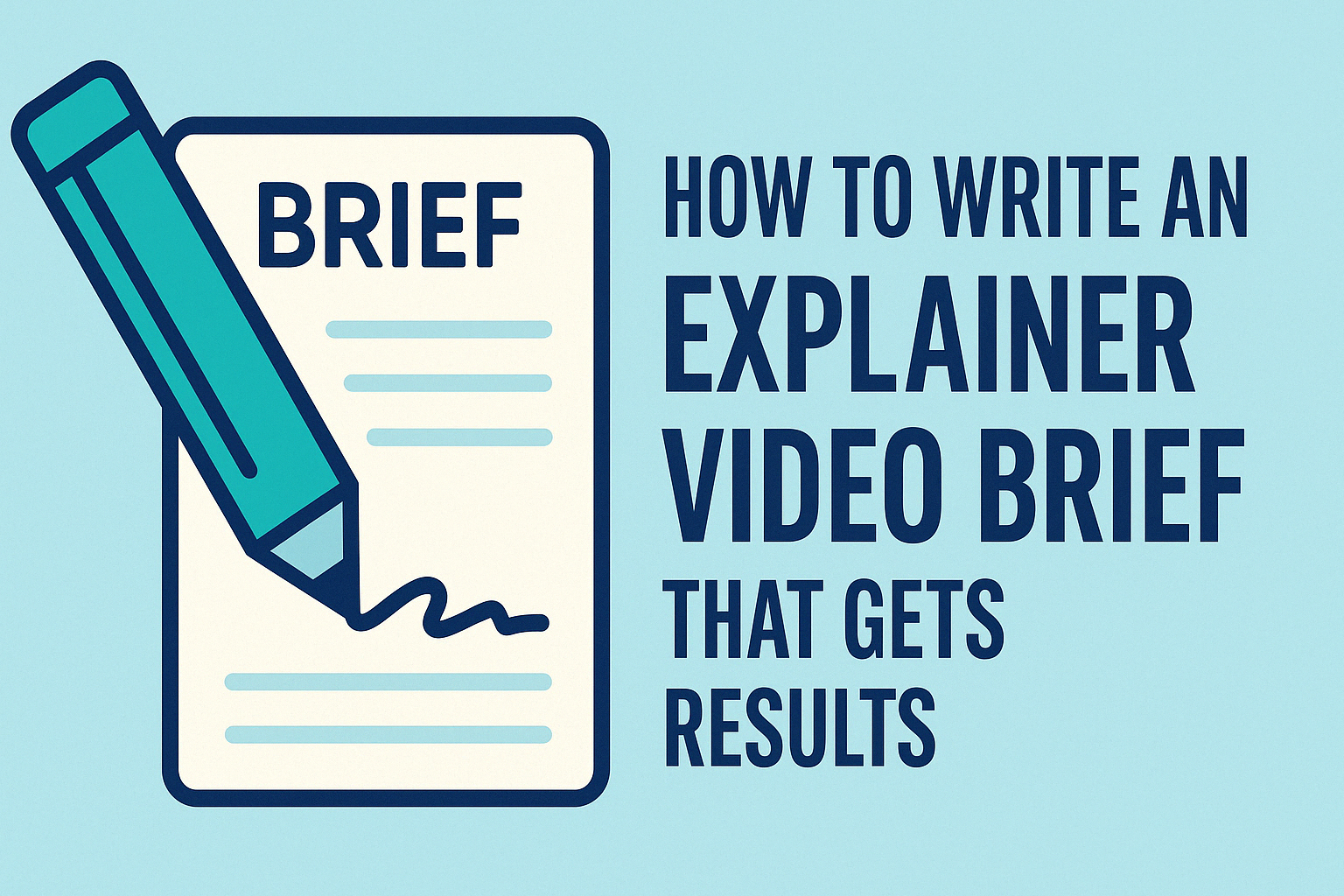How to Write an Explainer Video Brief That Gets Results
A well-crafted explainer video can drive conversions, boost brand recognition, and simplify complex ideas. But before the animation starts or the voiceover is recorded, you need a strong foundation: the explainer video brief. This document sets the stage for everything that follows. Get it right, and your project runs smoothly. Get it wrong, and you risk wasting time, money, and momentum.
Here’s how to write an explainer video brief that actually gets results.
1. Start With a Clear Goal
What is the purpose of this video? Are you trying to increase signups? Explain a new feature? Generate excitement for a launch? Be specific. If you try to do too much in one video, your message will get muddled. One video. One purpose.
Example goals:
Drive traffic to a landing page
Explain how your software solves a specific problem
Onboard new users with a quick visual overview
Encourage donations or volunteer signups
2. Know Your Audience
Who is this video for? Understanding your target viewer will shape the script, tone, style, and pacing.
Include basic demographics (age, profession, interests), but go deeper:
What are they struggling with?
What language do they use to describe their problem?
What objections might they have before taking action?
Your video should feel like it was made just for them.
3. Summarize the Key Message
You don’t need to write the script yet, but you do need to know the main takeaway. If someone only remembers one thing from the video, what should it be?
Keep it simple. One sentence is ideal. Think of this as the thesis statement for your video.
4. Outline the Problem and Your Solution
Briefly describe the core problem your audience is facing, then explain how your product or service solves it. This structure helps guide the narrative arc of the video.
Example: Problem: Small business owners waste hours creating invoices manually.
Solution: Our app automates invoices in seconds and tracks everything in one place.
5. Include Must-Have Details
Are there features, benefits, or differentiators that must be included? Is there a tagline or call-to-action that needs to appear on screen? Does the video need to match brand guidelines?
Examples of helpful details:
Specific stats to include
Tagline or catchphrase
Required colors, fonts, or brand voice guidelines
URL or phone number to display at the end
6. Share Inspiration
What do you like? What don’t you like? Include links to videos you admire. This gives the creative team a head start and reduces miscommunication.
Helpful info:
Three to five explainer videos you like (and why)
Notes on animation style preferences
Any tone guidance: playful, serious, minimalist, bold, etc.
7. Define the Format and Length
Most explainer videos fall between 60 and 90 seconds. That’s enough time to hook the viewer, explain the core idea, and prompt action. Longer videos can work, but only if they stay engaging.
Mention if you need:
Square, vertical, or widescreen format
Subtitles or captions
A specific runtime for ads or social media
8. Identify Where the Video Will Be Used
Context matters. A homepage video can be more in-depth. A social ad needs to hook the viewer fast. Include all the places you plan to use the video:
Website homepage or product page
Email marketing
YouTube pre-roll ad
Instagram or TikTok
In-person pitch or trade show
9. Clarify Who Needs to Approve the Video
A single point of contact is ideal, but if multiple stakeholders need to weigh in, say so up front. It helps set expectations for revisions and approvals.
10. Set a Timeline and Budget
Even a ballpark estimate is helpful. Let the team know if you're on a tight deadline or if the video needs to coincide with a launch or event. Include your budget or range, so expectations align from day one.
Bonus Tip: Keep It Short but Complete
Your brief doesn’t need to be five pages long, but it should be thorough. A clear brief saves time, avoids back-and-forth, and gives your creative team the confidence to do their best work.
Final Thought
Your explainer video is only as strong as the strategy behind it. Take the time to write a thoughtful brief, and the end result will reflect it—clearer messaging, smoother production, and a video that drives results.

